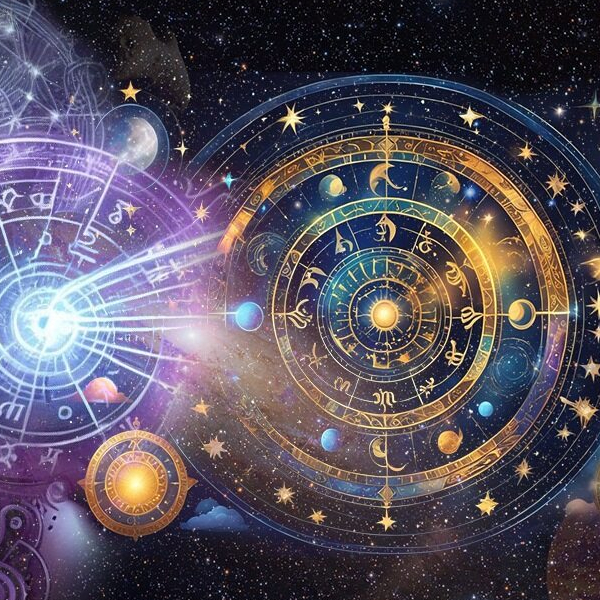Astrology offers fascinating insights into various aspects of life, including relationships and marriage. For those curious about when and if they will tie the knot, the marriage chart, also known as the natal chart or birth chart, can provide valuable guidance. This astrological tool examines planetary placements and houses to reveal potential timing and patterns in your romantic life.
One of the key elements of a marriage chart is the 7th house, which governs relationships and partnerships. The planets that occupy or rule this house play a significant role in understanding your approach to commitment. For instance, Venus, often called the planet of love, can indicate your desires and how you connect with others romantically. Similarly, Jupiter’s position may highlight opportunities for growth and joy within a partnership, while Saturn might point to challenges or lessons you need to overcome.
If a woman’s Sun is oriental—positioned in the 4th, 5th, 6th, 10th, 11th, or 12th house—it suggests a higher likelihood of an early marriage or marriage to a younger partner. Conversely, when the Sun is occidental, situated in the 1st, 2nd, 3rd, 7th, 8th, or 9th house, it often indicates a later marriage or union with an older partner. For men, the Moon’s position relative to the Sun provides insight. If the Moon is in the 1st or 2nd quarter—or oriental—it may point to early marriage. If it falls into the 3rd or 4th quarter and is occidental, marriage might occur later in life or involve an older partner. Additionally, the Moon in conjunction in a man’s chart tends to indicate early marriage, while a preventional Moon suggests delays in the timing of marriage.
Key planetary activities in a natal chart often signify when one enters a “Marriage Cycle.” This phase is typically highlighted by the activation of the 7th house—the house of relationships—and its ruler through transits or progressions. Other focal points include the Vertex, which, when triggered by significant transits or progressions, often marks major life turns. Similarly, Arabic Parts like the Part of Marriage and the Part of Spirit, as well as the Sun/Moon midpoint, frequently show activity in connection with the timing of marriage.
For this article, we will use Jennifer Aniston’s marriage to Brad Pitt.
We will be looking for:
- indicators to her 7th house
- indicators to her 7th house ruler, Mars
- indicators to her ascendant
- indicators to her ascendant ruler, Venus
- activation of her Vertex
- activation of her Part of Marriage and Part of Spirit
- indicators to Venus, planet of marriage
- indicators to her natal Sun, ruler of marriage partner

Analyzing such patterns is illustrated well in the case of Jennifer Aniston’s marriage to Brad Pitt in 2000. Her chart on their wedding day revealed a myriad of activations that aligned with this major life event. For instance, transiting Saturn opposed her natal Mars, the ruler of her 7th house, while Pluto trined her natal Venus, ruler of her Ascendant. The Vertex experienced significant activation, including aspects from Jupiter and Neptune. Secondary progressions further confirmed this “Marriage Cycle.” Progressed Venus reached her natal 7th house cusp, while progressed Moon conjuncted her natal Sun—both being classic indicators of marriage in astrological terms. Solar arc directions also played a significant role, such as solar arc Pluto reaching her Ascendant and solar arc Mars (rule of the 7th house) forming key aspects.
The alignment of these astrological factors not only reflected the timing of Jennifer’s marriage but also hinted at its challenges. For example, Venus in opposition to Uranus in the wedding chart symbolized potential instability, as Uranus governs sudden changes and detachment. Over time, directions and progressions, like Mars moving to oppose Neptune, also corresponded to the eventual dissolution of their marriage.
Astrology proves to be a powerful tool for identifying “Marriage Cycles” and significant relationship milestones. While it is not a definitive predictor of outcomes, it provides glimpses into potential opportunities and challenges, anchored in a balance between celestial influences and individual choices. For those curious about their own “Marriage Cycle,” a detailed astrological analysis of the natal chart, progressions, transits, and key indicators can offer valuable insights into their relationship path.
Timing can also be explored through transits and progressions, which show how current planetary movements influence your natal placements. Significant events such as Venus or Jupiter transiting the 7th house, or a favorable alignment with your 7th house ruler, could symbolize the right time for love and marriage. These astrological patterns help individuals align with meaningful relationship opportunities.
It is essential to remember that astrology serves as a tool for self-reflection rather than a mechanism for predicting fixed outcomes. While the stars may reveal possibilities, free will and personal choices remain central to shaping your destiny. Exploring your marriage chart is a way to gain deeper self-awareness and prepare for the relationships most aligned with your true self.






